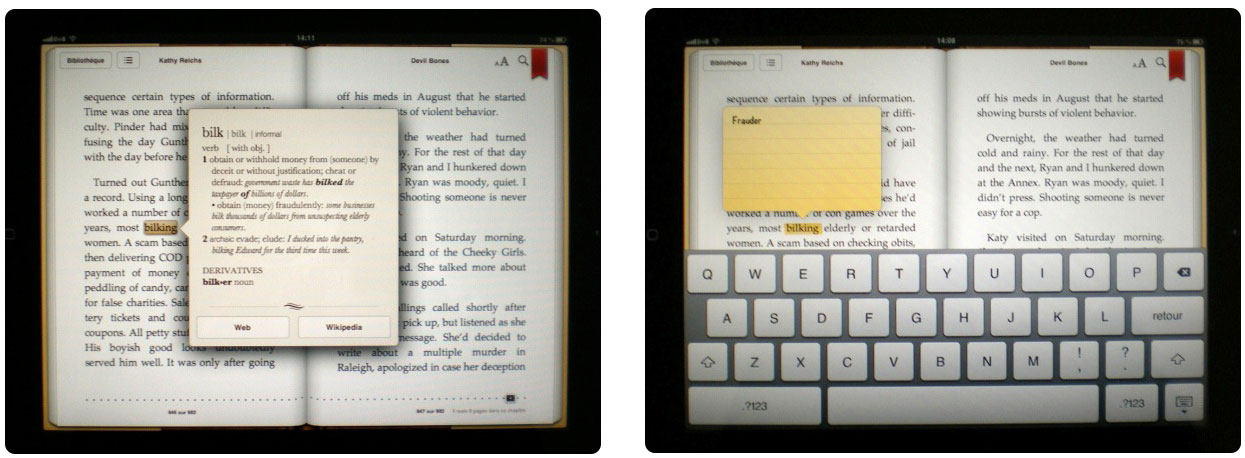Mobile Learning in the Classroom
Mobile learning is a hot topic of discussion in our college classrooms and elsewhere in the world of education. In fact, this week’s featured story in Profweb discusses the process of integrating tablets into our teaching.
What Mobile Learning Is
We know e–learning is short for electronic learning. Now we can discuss m-learning for mobile learning which is defined by the use of mobile technology to learn at any time and place that a student chooses. Furthermore, the Horizon Report 2012 of Educause identified portable devices as an emerging technology which would have a significant impact on higher education in the course of the following year. We have arrived!
A mobile device can be defined here as an easily-transported wireless device that is web-enabled to read and save texts, photos, videos and other documents. The most popular choices in this category are currently the tablet and the smartphone. Certain portable multimedia players can also function as mini-tablets.
Tablets
Smaller than an 8½ by 11 sheet of paper, lighter than a laptop, easy-to-use, about as powerful as a computer from around 2000, but equipped with a long life battery and loaded with apps which are often free, the tablet has a lot to offer! Even if they’re not as common in our colleges as they were in 2010 before the arrival of the iPad, they’ve already found a place in our teaching. There’s even an iPad Dec in the graphic design project management program at Cégep Beauce-Appalaches.
In a January 2012 Bulletin Clic article, Laurence Lachapelle-Bégin, who was then a pedagogical counsellor for VTÉ (Vitrine Technologie-éducation), listed the academic uses of tablets in the classroom:
- E-book and e-textbook reader.
- Document annotation and note-taking.
- Document research on the web.
- Viewing and listening to media.
- Document sharing, collaborative communication and work.
- Application content processing.
The VTÉ has also created a report called:
Génération nomade et apprentissage mobile (The Nomad Generation and Mobile Learning). And this is only the beginning of the story.

Example of listing of annotations in an e-book on a tablet. Photo credit: Pierrette Bergeron, 2012.
Besides our current story , there are several stories in Profweb descibing the pedagogical uses of tablets:
- Gordon Spicer, an administration teacher at John Abbott College wrote about The Use of the IPad as a Pedagogical Tool in the Classroom;
- Morris Nassi reported on iPhone replaces the iPad to support Active Learning.
At the upcoming SALTISE 2013 Conference, on June 10 and 11, Kevin Lenton and Rhys Adams of Vanier College will be speaking about Taking Ownership of Learning Using Graphical Tablets during the Tuesday 3PM to 4PM sessions.
Édouard-Montpetit, Boréal and Trois-Rivières cégeps, with the support of the Réseau des cégeps et collèges francophones du Canada (Network of Francophone Colleges in Canada), launched a collaborative project open to all to manage the site Tablettes tactiles – Intégration au collégial (Tablets – College-level Integration) as well as to organize a conference on the same topic in October 2012. Several colleges discussed activities in their school, and the recordings of these presentations in French are on the site.
As a sign of the times, CRIFPE the Centre de Recherche Interuniversitaire sur la Formation et la Profession Enseignante (Interuniversity Research Centre on Professional Teacher Training) organized a French language iPad in Education Summit in May 2013, and will hold a second in May 2014. The CRIFPE is moderating the site ‘iPad à l’école, quels usages, quels impacts?‘
APOP is also working to meet the need for courses dealing with tablets. It is offering continuing education activities in whichever format it feels best suits a particular need.
Furthermore, the IT Representatives’ Network decided to make the use of tablets a concerted goal in its workplan for 2012-2013 in order to support teachers in their classrooms.
The Smartphone
According to NETendances 2012 sur la mobilité, from CEFRIO, nearly 65% of young adults from 18 to 24 possess a smartphone, a figure that is increasing at a remarkable rate. Soon, they will all own one!
The pedagogical integration of this technology into the classroom, however, has been slow. It is often seen as a hindrance by teachers. Students text during the course, listen to music and consult their Facebook page to which the teacher is not always invited. Perhaps this view is because the telephone belongs to the student whereas the tablet is supplied by the school even though these two devices perform almost identical functions. In 2007, Pierre-Julien Guay and Brigitte Vandal of Vitrine Technologie-Éducation discussed the potential of these small mobile devices in French in number 63 of the bulletin Clic.
Experiments that give an insight into the pedagogical use of smartphones include the following:
- UNESCO published
a series of documents on mobile learning indicating that smartphones could facilitate learning (reference researched by Isabelle Laplante, of the CDC (Centre de documentation collégiale)). - A Swiss teacher, Andres Streiff published un guide sur les Portables et «smartphones» à l’école.
- Martin Beaudin-Lecours, of the Vitrine Technologie-Éducation, describes in the
bulletin Clic of January 2010 the geolocation possibilities of smartphones among other devices. - David Martel, a teacher at the Découvreurs school board, used iPhones and iPods as clickers using eClicker (link in French).
Teachers who use mobile devices in class often adopt more open pedagogical strategies such as the flipped classroom and problem-based learning. Mobile technology remains, however, a means not an end in creating a more student-centered classroom.
What do you think of the use of mobile devices in class? Do you have any experiences to share with your colleagues?

